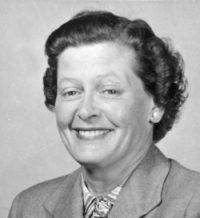Legaspi, Albay
When we awoke this morning it was still and hot, and Mayon clad in a transparent wisp of white, thrust her perfect cone up into the incredibly blue sky. To get such a view of this elusive volcanic peak was more than we had dared hope for, as we had been told that it was often hidden for months at a time. If it had been this clear yesterday, think of the gorgeous views we would have gotten from that altitude! We might even have made the top.
Before breakfast we walked down to the pier to watch the loading of a Norwegian freighter. The ship’s home port was Oslo, although she had never been there as the first mate told us in very broken English. She was built in Denmark and was now chartered by a Japanese firm to take copra to Europe. We wondered how long it had been since her big, blond Norwegian crewmen had been home.
About five hundred Filipino cargadores were engaged in loading the copra. Each man shouldered his heavy sack and at the blast of a whistle staggered out the long, bamboo pier, unable to see anything but the feet of the man ahead. When the line stopped suddenly several men would bump together and fall, incapable of rising under their loads until the last of the line had passed over them. At another whistle signal, the loading would cease as abruptly as it had begun, and the men would repair to the food stalls which their women had set up between the warehouses. Here they lazed around while another shift took over.
When we returned to the hotel, the young German had just sat down to breakfast and asked us to join him. After Ham asked him several questions about his work he seemed to get over his reticence about his English and talked extremely well. He told us that although the island of Rapu-Rapu is very small it is very rich in copper, the ore assaying about forty dollars per ton. Gold, worth about nine dollars a ton, is also found there, but, due to transportation difficulties, it is not salable: the gold ore is used to pave the road that winds up twelve hundred feet to get the copper out. When the copper is mined it is loaded into baskets which the native men, women and children carry on their heads, down the steep incline to the shore; loads vary from forty to one hundred and twenty kilos! The travel is doubly hazardous as the island is infested with poisonous snakes. After the ore reaches the beach it is transferred to barges which haul it out to the waiting ships because the shallowness of the water inside the protecting corral reef makes it impossible for the convenient use of piers. That copper is certainly rich in human toil before it ever gets to the outside world!
As our train pulled out of Legaspi this morning, the clouds were again gathering around Mayon and rain squalls were chasing each other across that lovely little land-locked harbor.
